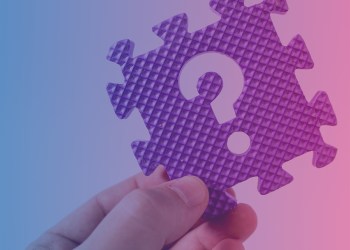You could say that we live in a “throwaway” economy, a linear economy that goes from take to make and finally to waste. We need to work towards an economy focused on regeneration – a “circular” economy, where waste is eliminated, resources circulated, and nature restored.
A circular economic system targets zero waste. It is a model that invokes the 3Rs of “reduce, reuse, and recycle”. A practical example would be, for instance, manufacturers designing products to be reusable, or recycling plastic into pellets for making new plastic products.
Backed by the United Nations, the circular economy seeks “to stimulate economic growth and generate employment without jeopardizing the environment, positioning itself as a cornerstone for resilient, low-carbon economic recovery, following the COVID-19 pandemic”.
So, can technology take us a step closer to a circular economy? Yes, in many ways.
Big data
Big data can help to accelerate this circular economy of reuse and recycle. Big data helped the French city of Lille with water management. In 2016, this city launched “Vig’ileo”, a smart water service, whereby sensors, installed along the 4,300 kilometer-long water network, allowed peak consumption, leaks, pollution, etc to be detected and addressed in real-time.
Big Data feeds Smart Cities with information on energy, waste, and pollution and helps better manage them, in real-time. You could harness big data to connect multiple waste producers with independent waste haulers in a region, allowing them to coordinate to optimize trucking routes, reuse waste material, segregate more effectively, and so on.
IoT, AI, ML
IoT and AI/ML are all allies to the circular economy. The Internet of Things or IoT can help improve efficiencies as well as detect issues before they occur. It can also help monitor products or equipment remotely. An example would be sensors included in manufacturing equipment to detect problems before they occur or program reminders about regular cleaning, thereby enhancing customer experience as well as helping to extend equipment lifespan.
The AI opportunity in accelerating the move towards a circular economy for consumer electronics is up to $90 billion a year in 2030. (check out the report here). In food services, the potential is up to $127 billion a year in 2030.
Blockchain
Blockchain technology can contribute to the circular economy by helping to reduce transaction costs, enhance performance along the supply chain, ensure confidentiality, and reduce carbon footprint, says an April report in the Journal of Cleaner Production.
RFI (Radio Frequency Identification)
Latest-generation sensors and RFID (Radio Frequency Identification) allow real-time data tracking, improving scalability. In Sweden for instance, over 200 tonnes of textiles end up as household waste every day. To achieve a circular economy, the European Commission worked towards developing information systems based on RFID technology, to track all relevant information needed for handling textile from sourcing to end-of-life.
XaaS (Everything-as-a-Service)
Everything-as-a-Service (XaaS) models can deliver environmental and economic benefits. XaaS models put tangible products together with intangible services to meet societal needs. That translates to creating longer-lasting products as well as incorporating processes for reuse and recycling into the system, thereby helping to curb climate change.
Some technological innovations have the power, when used right, to accelerate the circular economy and transform traditional businesses. Allow us to help you take that digital leap towards a greener future. Contact us today.













